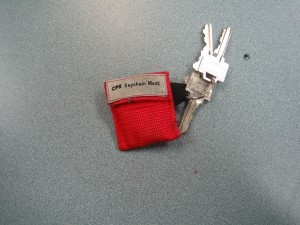In emergency situations, it is important to ensure that the patient’s airway is opened. Oropharyngeal airway,or simply airway, is an essential device used by paramedics and EMTs when providing emergency care.
In first aid and emergency response, keeping the victim’s airway open is crucial in increasing the victim’s chances of survivability and improving the outcome. Trained first aiders, paramedics and EMT’s use an oropharyngeal airway device to ensure that the airway is open. The term oropharyngeal refers to the mouth (“Oro-“) and the throat (“Pharyngeal-“). It is a curved device, usually made of plastic, which is inserted through the victim’s mouth extending through the throat and opens to towards the airway. The outer end has a flange that fits against the victim’s lips. The rest of the body curves back to the throat, holding the down the tongue.
When used properly, an oropharyngeal airway device can greatly reduce the chances of airway obstruction. Take note that when a person loses consciousness the muscles relax. This can cause thee tongue to slide down into the throat and obstructing the airway. Although the use of head-tilt or jaw-thrust maneuver, or chin-lift maneuver can help open the victim’s airway, the tongue may slide back to its obstructive position when the maneuver is released. In fact, in some cases, the tongue draws back even when head-tilt or jaw-thrust maneuver is applied.
Oropharyngeal airways come in different standard sizes for infants, children and adults. Paramedics and EMTs usually carry an entire set in one container for quick, proper selection. Every ambulance must have a complete set of airways.
In order for the device to be effective, the right size must be chosen. The airway should extend from the center of the mouth to the angle of the lower jaw. Another technique that can be used to determine the appropriate size of airway device is to measure from the corner of the mouth to the tip of the earlobe. Do not use oropharyngeal airways if they are not the correct size. Also, do not use airway until it has been properly sized. The airway can either be too short or too large, and can affect airway patency. If the airway device is too large, it can fall forward 
By attending a basic life support (BLS) or advanced life support (ALS) training course you can learn how to choose the right size of airway for the victim. More importantly, you will learn the right skills on how to use and insertan airway device.
